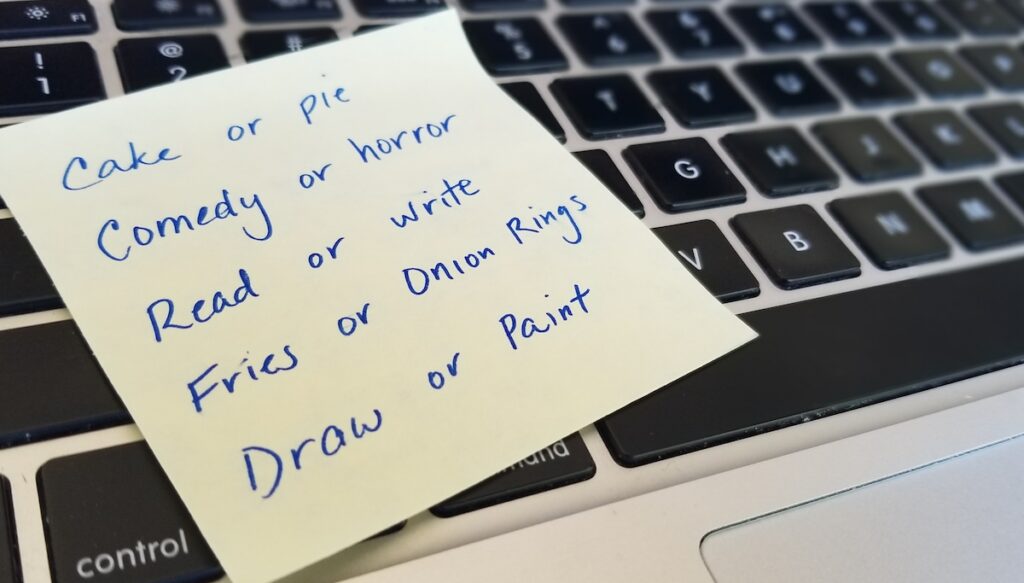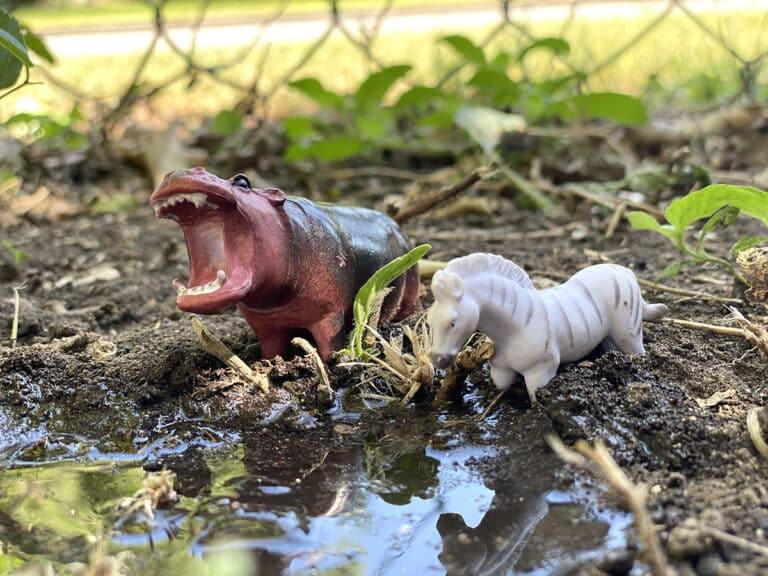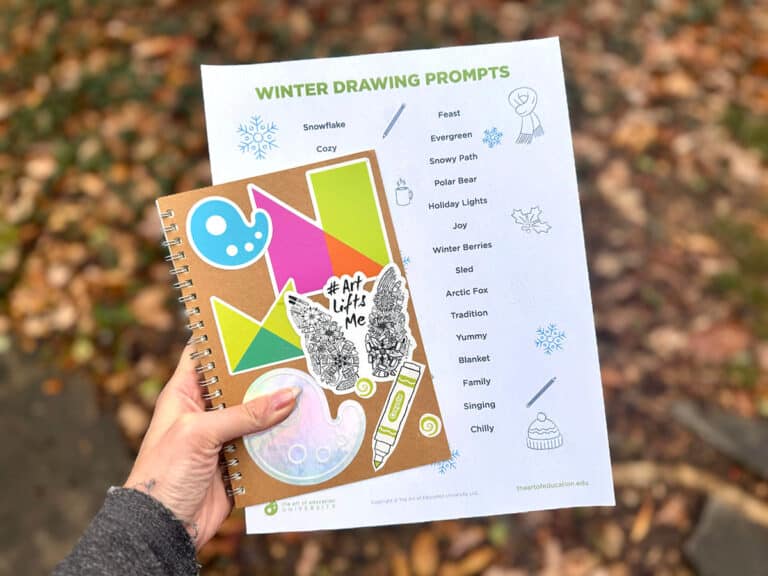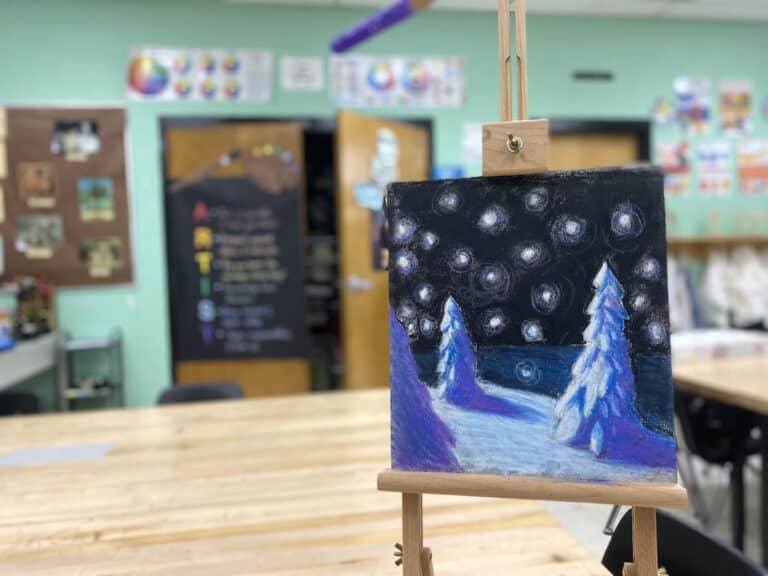Return to Learn with The Art of Education University
Creating a positive learning environment in the online classroom can help students feel more supported in their artmaking and lead to more effective critiques. This can be a challenge when students aren’t physically sitting next to each other and will require some planning and intentionality on your part. Activities to learn about your students and build connections are important at the beginning of the course to lay a foundation of community and are also necessary to include throughout the class to maintain a positive atmosphere.

These games are designed for live video chats with groups of students and can be adapted for any age by changing the topics. All of the games allow students to respond verbally, and, if possible, you could engage more students by having them enter their responses in the chat feature.
Try out these five games to learn more about your students and have some fun.
1. This or That
You play the host in this high-speed and action-packed game. Start by cold-calling one student and ask their preference between two fun choices. For example, you could ask a student to choose between cake or pie. The student would unmute and give their answer. You can choose to add follow-up questions like what flavor is their favorite and/or share your personal preference. To engage other students, you could also poll the class by asking students to give a thumbs up if they agree. Then, continue asking specific students to choose this or that with a variety of fun topics. Students can also submit topics before the game begins to give you a stock of ideas to pull from.

Examples can include:
- Hot dogs or pizza
- Night or day
- Inside or outside
- Breakfast or dinner
- Chocolate or lollipops
2. Would You Rather?
Keep the whole class engaged with this scenario-based activity where everyone gets to play at the same time. You start by asking the students which scenario they would prefer, and they can respond by holding up a 1 or 2 with their fingers. For example, “Would you rather eat a cup of grass or a cup of dirt?” Encourage students to respond immediately with their fingers and give students a chance to see how the class responded. Use the opportunity to engage with individual students by posing follow-up questions and comments. Topics can be fun and imaginative to get the students laughing and thinking about the possibilities.
For example:
- Would you rather skydive or scuba dive?
- Would you rather drink sour milk or drink from a puddle?
- Would you rather forget how to talk or forget how to read?
- Would you rather have three hands or three feet?
- Would you rather lose your sense of smell or your sense of taste?
3. I Have Never…
Learning about your students’ past experiences can be a fun way to get to know them and build connections with others in the classroom. This game starts with you saying, “I have never…” and then picking an experience, action, or thought. For example, “I have never eaten food off the floor.” If students have done the action and eaten food off the floor, they give a thumbs up, signifying it’s okay to do. You can then follow up with students and ask them to share their past experiences with the rest of the class. This game can also be adapted for students to take turns sharing what they have never done and having the class respond.
Other examples can include:
- I have never ridden an animal.
- I have never eaten dessert for breakfast.
- I have never had a pet.
- I have never cheated on my homework.
- I have never tricked my sibling.
4. Finish This Sentence
This game can have it all as students complete the sentence you start. The topics can reveal their opinions and interests, as well as allow them to be imaginative and creative. You start by calling on a student and giving the first part of the sentence. For example, “I’m most happy when…” and then the student completes the answer. You can then use that information to engage the rest of the class by seeing who agrees with them. You could also share your own answer to help the students learn more about you.

Other possible sentence-starters include:
- I can’t stop laughing when…
- Chocolate is…
- This school year, I want to…
- I hope I never eat…
- The best thing to watch on TV is…
5. Rapid-Fire Favorites
Learning about students is never easier than just asking them directly. In this game, you cold call students and ask for their favorite specific topics. Students respond immediately, and you can move on to the next student and question. As students share their favorites, other students in the class can make connections and see who has shared interests. You can also ask students to elaborate on their answers and share your own responses.
For example:
- What is your favorite candy?
- What is your favorite sports team?
- What is your favorite class?
- What is your favorite store?
- Who is your favorite musician?
Building relationships with students in the art room happens more naturally over time and through organic conversations and moments. In the online classroom, however, it’s important to build in specific activities to make connections with your students and to help them connect with each other. Using games can be a fun way to engage all students and learn more about their interests and background. Learning online can feel isolating, but adding games like these can help students be a part of a community to give them a sense of belonging, and help them enjoy their art experience.
Return to Learn with The Art of Education University
What other games can be used in the online classroom to learn about students?
What art projects can help students connect with each other?
Magazine articles and podcasts are opinions of professional education contributors and do not necessarily represent the position of the Art of Education University (AOEU) or its academic offerings. Contributors use terms in the way they are most often talked about in the scope of their educational experiences.






